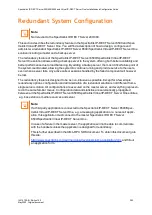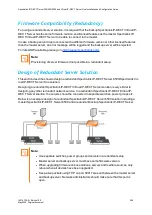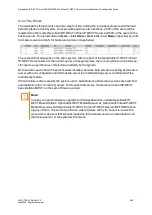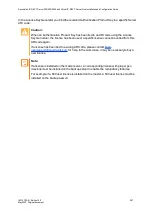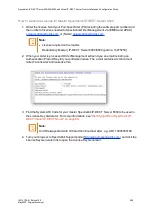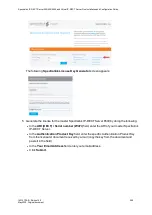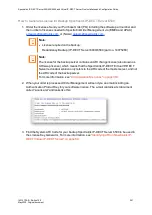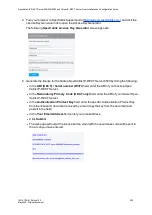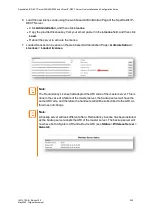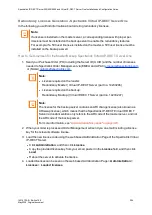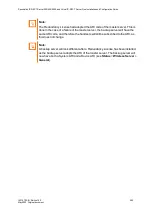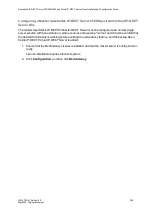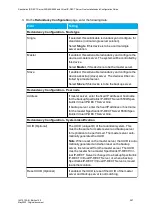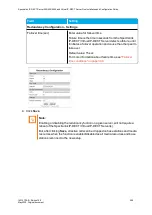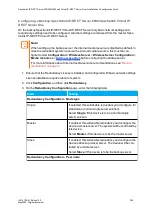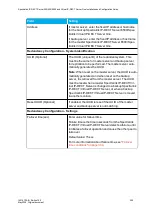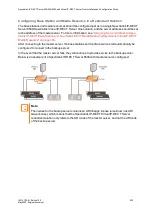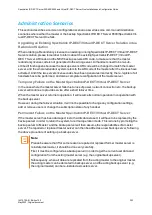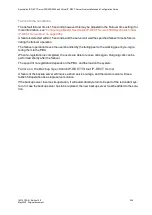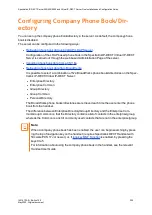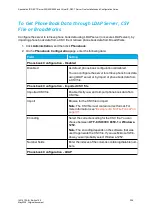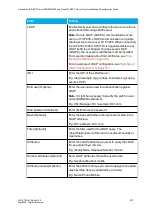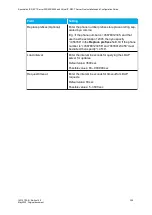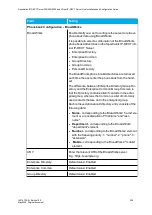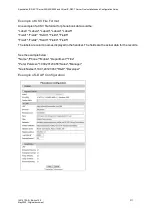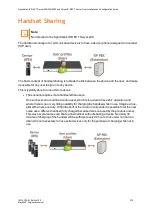
14215700-IG, Edition 15.0
May 2020, Original document
297
3. On the
Redundancy Configuration
page, enter the following data:
Field
Setting
Redundancy Configuration - Node type
Single
If selected, this will disable redundancy and configure for
stand alone (normal single server solution).
Select
Single
, if this device is to be a normal single
server solution.
Master
If enabled, this will enable redundancy and configure the
device as master server. The system will be controlled by
this device.
Select
Master
, if this device is to be the master server.
Slave
If enabled, this will enable redundancy and configure the
device as backup (slave) server. The device will be con-
trolled by a master server.
Select
Slave
, if this device is to be the backup server.
Redundancy Configuration - Peer node
Address
If master server, enter the fixed IP address or hostname
for the backup Spectralink IP-DECT Server 6500/Spec-
tralink Virtual IP-DECT Server One.
If backup server, enter the fixed IP address or hostname
for the master Spectralink IP-DECT Server 6500/Spec-
tralink Virtual IP-DECT Server One.
Redundancy Configuration - System identification
UUID (Optional)
The UUID (unique ID) of the redundant system. This
must be the same for master server and backup server
for replication to be performed. The master server auto-
matically generates the UUID.
Note
: When reset on the master server, the UUID is auto-
matically generated, and when reset on the backup
server, it is retrieved from the master server. The UUID
must be reset when a master Spectralink IP-DECT/Vir-
tual IP-DECT Server is changed to a backup Spectralink
IP-DECT/Virtual IP-DECT Server, or when a backup
Spectralink IP-DECT/Virtual IP-DECT Server is moved
to another solution.
Reset UUID (Optional)
If enabled, the UUID is reset if the UUID of the master
server and backup server is not matching.
Spectralink IP-DECT Server 200/400/6500 and Virtual IP-DECT Server One Installation and Configuration Guide

